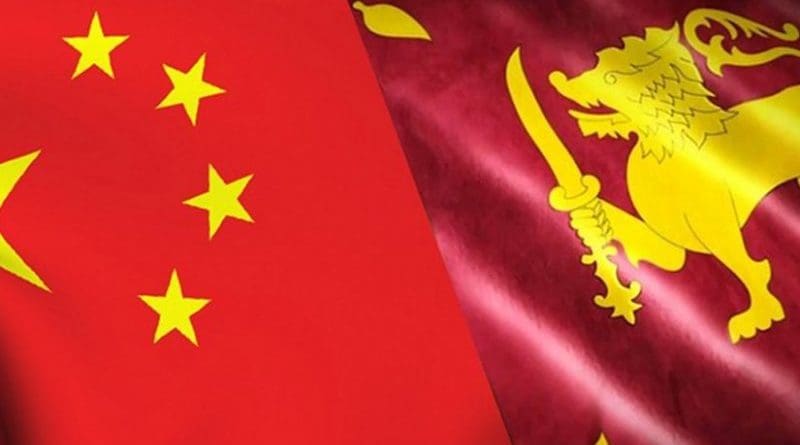Sri Lanka: China’s Listening Post In Indian Ocean – OpEd
By SAAG
y Bhaskar Roy
When Sri Lanka’s new President Maithripala Sirisena recently visited China he was literally squeezed by the Chinese leaders not to review the Chinese investments and infrastructure projects in his country and secure Chinese interests.
Sirisena had little room to manoeuere Sri Lanka is in a difficult financial situation. The International Monetary Fund (IMF) rejected a request from the Sri Lankan government for a US $ 4 billion loan to restructure debt payment on Chinese loans.
Obviously, Sri Lanka has been caught in a Chinese debt trap. Parts of the country seem to have been mortgaged to China to assist Beijing in its advance into the Indian Ocean (see Robert D. Kaplan’s article in March 2009 issue of the Foreign Affairs magazine).
In writings on Chinese capture of strategic infrastructure projects one that has missed attraction is the Lotus Tower in Colombo. The tower funded by the Chinese Exim Bank, is 26 meters higher than the Eiffel Tower. This US $ 103 million tower is being built by the China National Electronic Import and Export Corporation (CNEIEC) and the Chinese Aerospace Long – March International Trade (CALMIT).
A brief look at the background of these two Chinese Companies reveal facts that the previous Sri Lankan government, led by President Mahinda Rajapaksa should have examined. According to CNEIEC’s profile, the company is involved in defence electronics system integration, construction of defence electronics system, integration of public security responding to international anti – terrorism demand among others.
The CALMIT is involved in the aero – space industry, according to its company profile. It also specializes in export and import of defence equipment, technology and services, export of anti – terrorism, anti – riot equipment, technologies and services among other activities.
It is, therefore, intriguing that these two companies which are involved in military and quasi – military business are building South Asia’s tallest tower in Sri Lanka, covering the gut of the Indian Ocean on the one side, and India on the other. There is no doubt that the Lotus Tower is an electronic surveillance facility.
It may be argued that nothing like that is visible to the naked eye on the tower. That would be challenging the advancement that technology instruments are imbedded, and Sri Lanka does not have the technological capability to locate such hidden assets, which are known as “assassin’s mace” weapons. The tower, if allowed to complete construction will be a threat to the security of the Indian Ocean and South Asia.
Add to this the Colombo port city, the Colombo port and the Hambantota container port, three other strategic Chinese encroachments in Sri Lanka, and a much larger picture emerges. China’s 21st century maritime Silk Road is calculated as very important, if not central, to the success of this project. This Silk Road is projected as a commercial and developmental enterprise with a win-win situation for all. But what China is doing in Sri Lanka questions the ultimate design of the Silk Road.
China has suggested to the Sri Lankan president and foreign minister a trilateral arrangement between China, Sri Lanka and India for the development of Sri Lanka. Sirisena appears to have given a nod to the Chinese suggestion when he was in China. But India has to be brought in.
How would this work? China is aware of India’s concerns about its activities in Sri Lanka some of which are perceived as a security threat to India. What role would China like India to play in such a trilateral arrangement? Should India look aside when it builds a listening tower in Sri Lanka, have its submarines visit Sri Lanka, and finally turn the country into a dual use platform for civilian and military use? This sounds like a trap, pushing Sri Lanka to work on India. Prime Minister Narendra Modi should be acutely aware of it when he visits China in May.
(The writer is a New Delhi based strategic analyst. He can be reached at e-mail [email protected])


Surmising and generalizations are all well and good as pseudo-intellectual pursuits but how does one convince the majority of under-informed Sri Lankans that the reality is that of China earnestly pursuing the goal of an ever-increasing militarist foothold in Sri Lankan and that is specifically the objective that , way back in circa 2001-02, triggered the forces which brought the US, India, Japan et al to forge a corresponding militarist alliance/partnership to counter China’s veiled belliogerence in the Indo-Asia-Pacific region ?